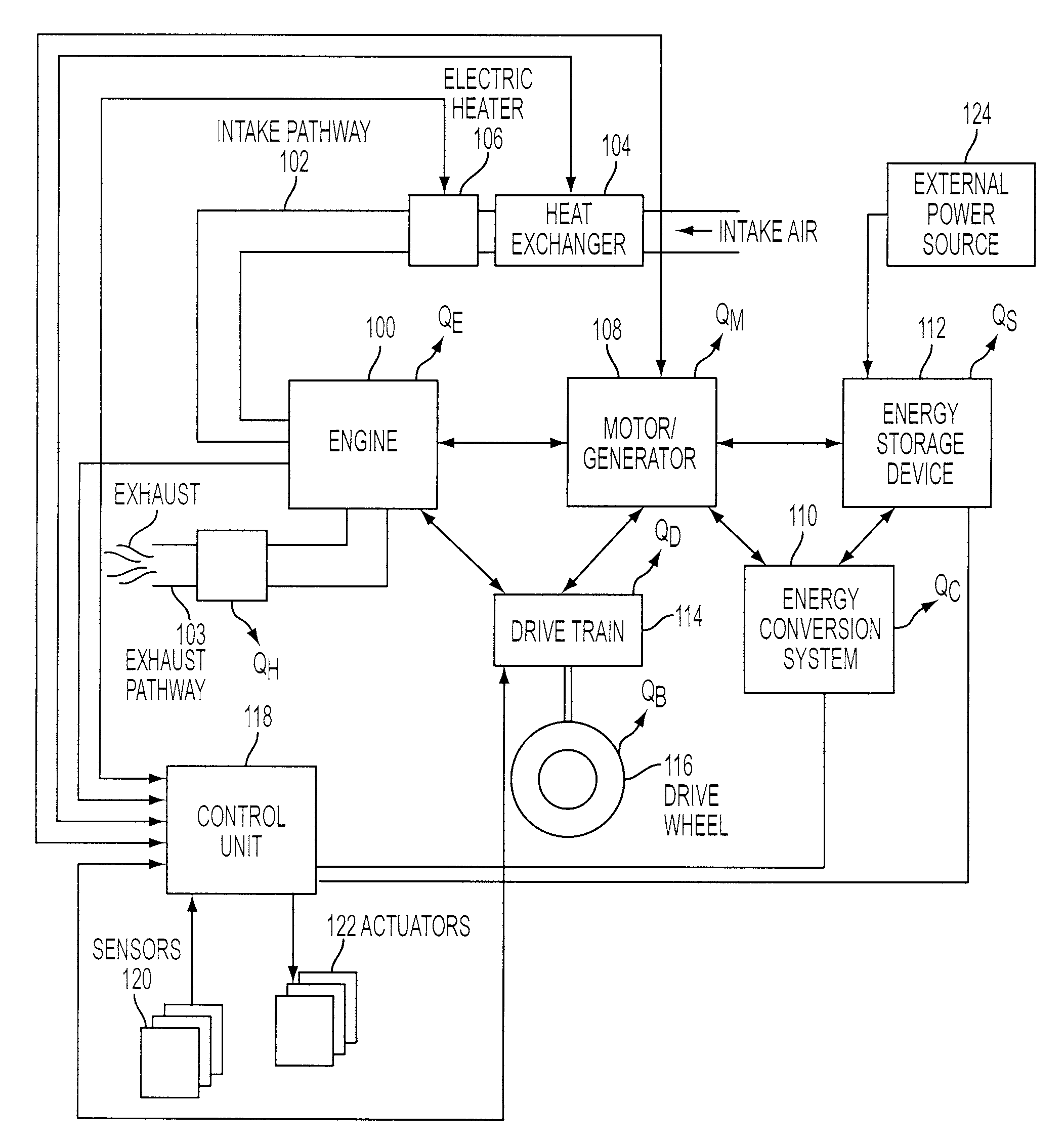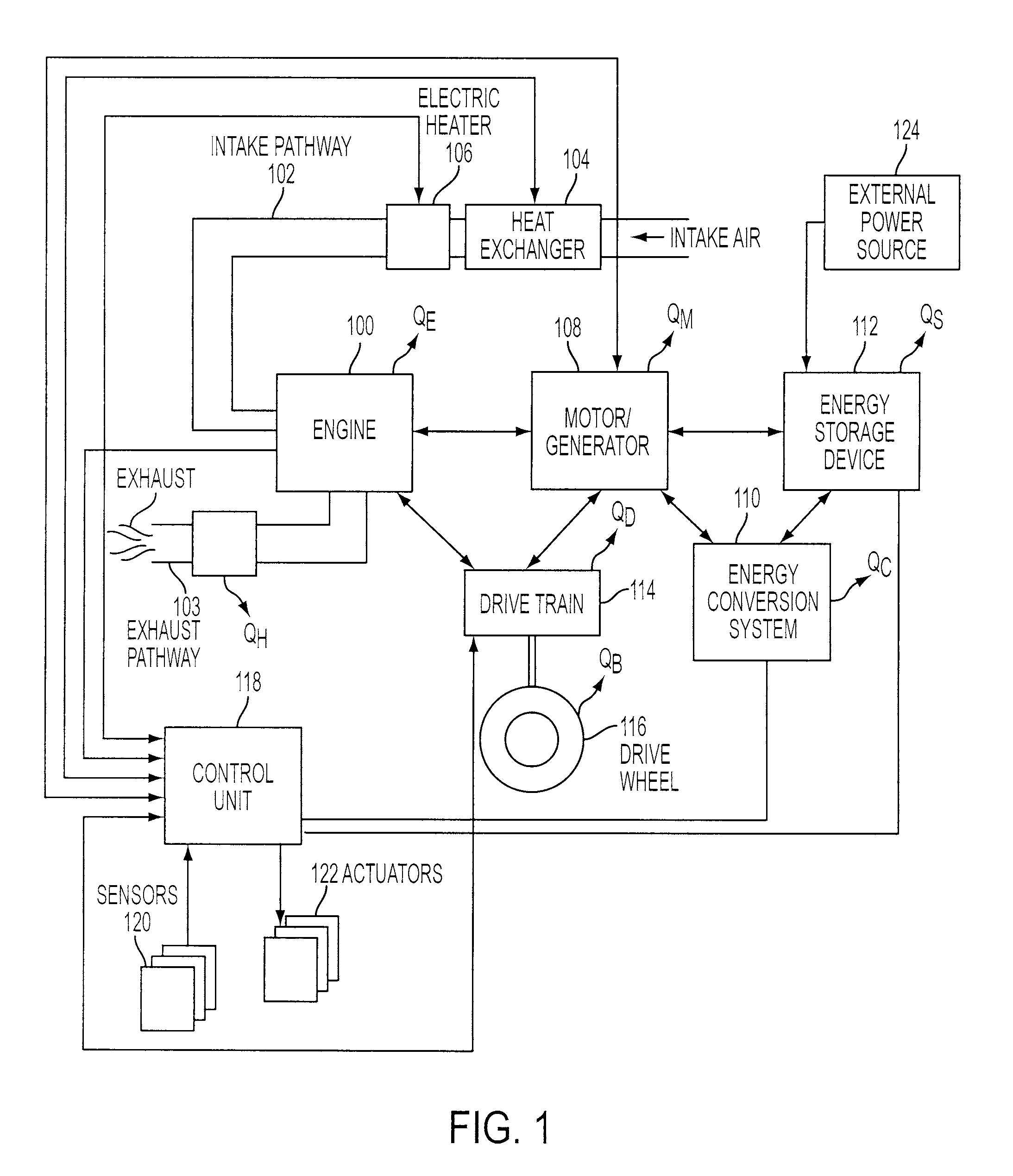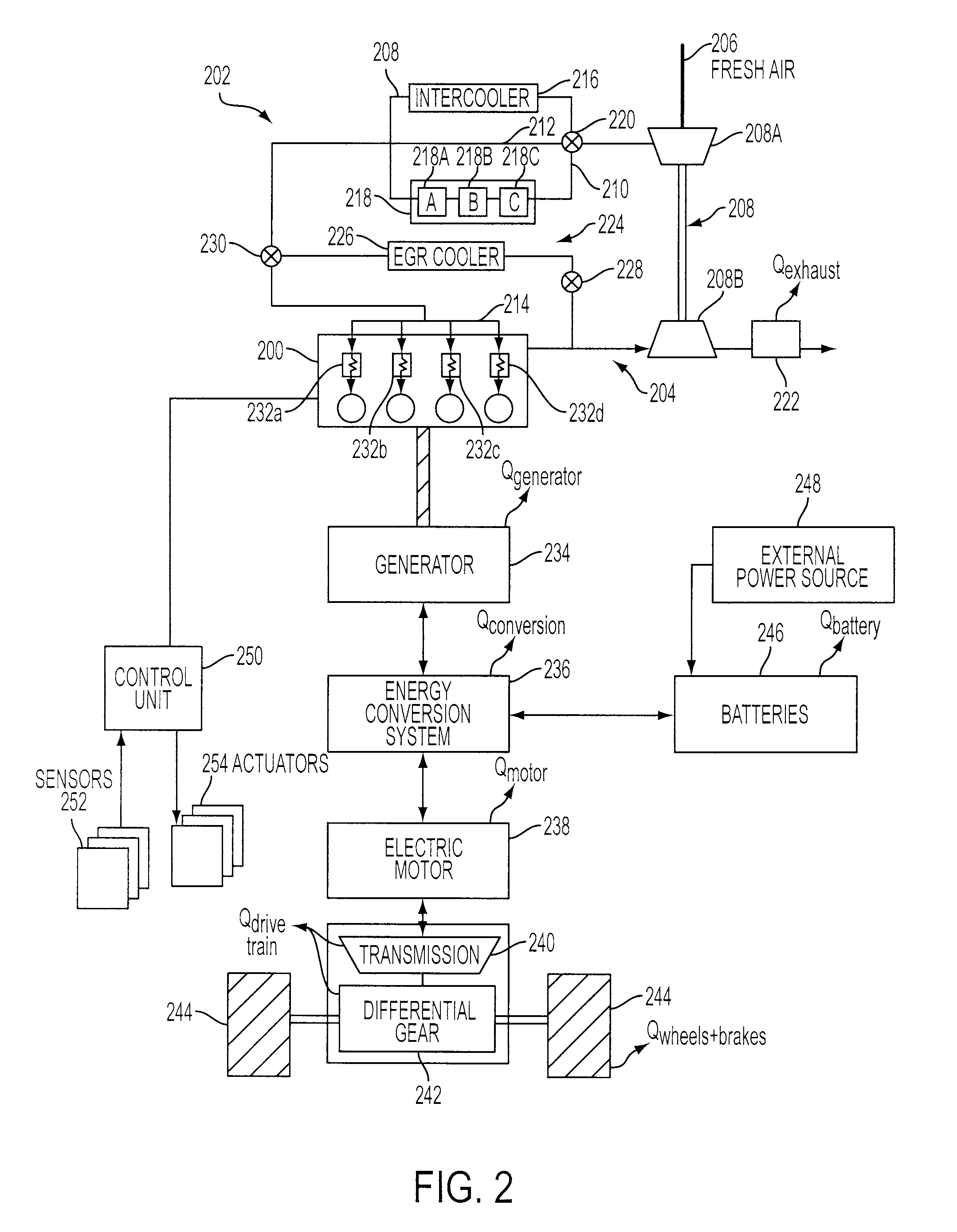Hybrid Thermal Energy Conversion for HCCI Heated Intake Charge System
a technology of thermal energy conversion and heated intake charge, which is applied in the direction of hybrid vehicles, electrical control, combustion air/fuel air treatment, etc., can solve the problems of reducing the thermal energy availability of heating the intake charge, unable to provide sufficient heat or sufficiently precise temperature control, and/or the above heat source may be unavailable and/or insufficient heat or sufficient temperature control, etc., to achieve accurate temperature control of the intake charge, reduce the impact of fuel economy, and harvest various sources of thermal energy
- Summary
- Abstract
- Description
- Claims
- Application Information
AI Technical Summary
Benefits of technology
Problems solved by technology
Method used
Image
Examples
Embodiment Construction
[0016]FIG. 1 is a block diagram illustrating an example intake thermal management system for a HCCI engine, which may include an engine 100 with an intake pathway 102 and an exhaust pathway 103, a heat exchanger 104 that harvests vehicle thermal energy to heat intake air, and an electric heater 106. The intake thermal management system may include an electric power system for a hybrid power train (not labeled), which may include a motor / generator 108 for generating electrical power from engine torque as part of an engine electrical power generating system (not all shown) and / or regenerative braking as part of an regenerative braking system (not all shown), an energy conversion system 110, an energy storage device 112. The intake thermal management system may also include a drive train 114 and a set of drive wheels 116. The energy storage device 112 may be coupled to an external power source 124 for supplying power used for charging the energy storage device. The intake thermal manag...
PUM
 Login to View More
Login to View More Abstract
Description
Claims
Application Information
 Login to View More
Login to View More - R&D
- Intellectual Property
- Life Sciences
- Materials
- Tech Scout
- Unparalleled Data Quality
- Higher Quality Content
- 60% Fewer Hallucinations
Browse by: Latest US Patents, China's latest patents, Technical Efficacy Thesaurus, Application Domain, Technology Topic, Popular Technical Reports.
© 2025 PatSnap. All rights reserved.Legal|Privacy policy|Modern Slavery Act Transparency Statement|Sitemap|About US| Contact US: help@patsnap.com



